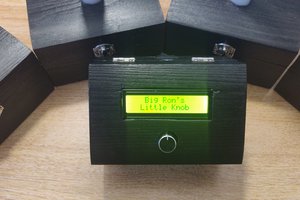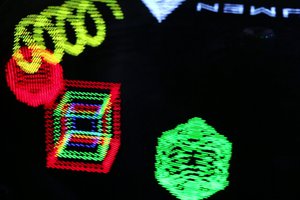Accelerometers read the movement of the hands and send it to a WeMos D1 R2 board. There it is transmitted through OSC messages using a WiFi connection to a computer with a Pure Data patch that receives the messages and generates sound. The design of the hand piece was 3D printed. The accelerometers, along with an LED that reacts to the readings of the accelerometers, were placed inside.
By Ana Marín, MFA Sound Design, In collaboration with María Posada, MA Jewelry.
 Ana M. Marín
Ana M. Marín
 Ron O'Sullivan
Ron O'Sullivan

 Anthony I Stewart
Anthony I Stewart
 Edward C. Deaver, IV
Edward C. Deaver, IV